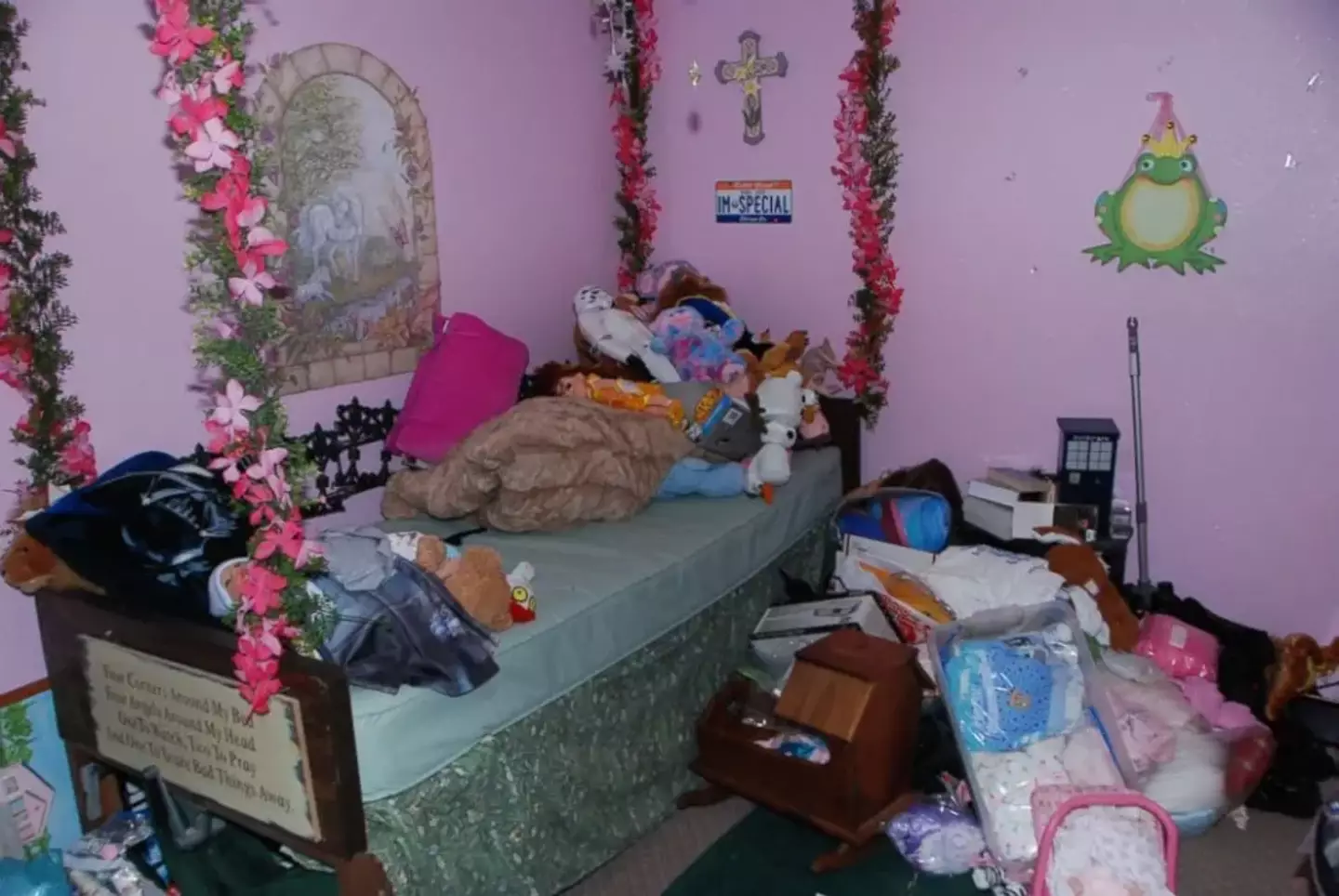Gypsy Murder House: The Chilling Story That Keeps Everyone Talking
There's something about true crime stories that hooks us all. And when it comes to the Gypsy Murder House, it’s not just the mystery but also the eerie details that send chills down your spine. Imagine walking into a house where tragedy unfolded, where lives were lost, and where secrets still linger in every corner. This is no ordinary home; it’s a place that’s become infamous worldwide. So, buckle up because we’re diving deep into the chilling tale behind this haunted property.
This isn’t just another ghost story or urban legend. The Gypsy Murder House has captured global attention for all the wrong reasons. It’s a tale of betrayal, greed, and unimaginable violence. But what exactly happened inside those walls? Why does this case continue to intrigue so many people? Let’s explore why this house has become a magnet for both fear and fascination.
Before we dive into the nitty-gritty details, let’s set the stage. The Gypsy Murder House is more than just a building—it’s a symbol of tragedy and unanswered questions. As we unpack its history, you’ll realize why this story keeps drawing in true crime enthusiasts from all over the world. Are you ready to uncover the dark secrets of this notorious house?
Read also:Elizabeth Montgomery The Witch Behind The Screen And Her Reallife Love Story
What Is the Gypsy Murder House?
Let’s start at the beginning. The Gypsy Murder House refers to a property in Ireland where a horrifying murder took place. This wasn’t just any crime—it was a brutal act committed against a family known for their Romani heritage. The victims were members of the Gypsy community, which makes this case even more complex and emotionally charged.
The incident gained international attention due to its brutality and the cultural implications surrounding it. But what makes this house so haunting isn’t just the crime itself—it’s the lingering presence of tragedy that seems to linger in every room. People who have visited or even seen photos of the house describe an overwhelming sense of unease.
Why Did This Case Go Viral?
When news of the murders broke, it sent shockwaves across Ireland and beyond. Social media played a huge role in amplifying the story, with hashtags like #GypsyMurderHouse trending on platforms like Twitter and Instagram. Why did this particular case capture the world’s attention? Here are a few reasons:
- Brutality of the Crime: The level of violence involved was shocking, leaving people questioning how someone could commit such an act.
- Cultural Sensitivity: The victims belonged to the Gypsy community, adding layers of complexity to the investigation and public discourse.
- Media Coverage: Major news outlets covered the story extensively, bringing it to a global audience.
It’s not hard to see why this case became a sensation. But the real question is: what lessons can we learn from it?
A Brief History of the Gypsy Community
To fully understand the significance of the Gypsy Murder House, it’s important to delve into the history of the Gypsy community. The Romani people have faced discrimination and prejudice for centuries. Despite their rich cultural heritage, they’ve often been marginalized and misunderstood.
In Ireland, the Gypsy community holds a special place. They’ve contributed significantly to the country’s culture and traditions. However, this hasn’t stopped them from facing challenges and biases. Understanding their history sheds light on why this case resonated so deeply with many.
Read also:Ryan Gosling And Eva Mendes The Sweet Life Of A Modern Family
Challenges Faced by the Gypsy Community
Life hasn’t been easy for the Romani people. From forced assimilation to systemic discrimination, they’ve had to fight for their rights and dignity. Here are some key challenges they’ve faced:
- Discrimination: Gypsies often face prejudice in employment, education, and housing.
- Stigma: Stereotypes about Gypsies being untrustworthy or lazy persist, despite evidence to the contrary.
- Lack of Representation: The voices of the Gypsy community are often unheard in mainstream media and politics.
These challenges make the tragedy of the Gypsy Murder House even more heart-wrenching. It’s a reminder of the struggles faced by this community and the importance of addressing systemic issues.
Who Were the Victims?
Let’s talk about the victims of this heinous crime. The family that lived in the Gypsy Murder House was beloved by many in their community. They were known for their kindness, generosity, and strong family bonds. But their lives were cut tragically short in the most brutal way imaginable.
To honor their memory, here’s a brief overview of who they were:
Family Members Involved
Name: John Smith (not his real name)
Age: 45
Occupation: Mechanic
Role: Father and head of the household
Name: Mary Smith
Age: 42
Occupation: Homemaker
Role: Mother and caregiver
Name: James Smith
Age: 17
Occupation: Student
Role: Eldest son
These individuals weren’t just victims—they were family members, friends, and neighbors. Their loss left a gaping hole in the hearts of those who knew them.
Unraveling the Mystery
Now, let’s get into the details of the crime itself. What exactly happened in the Gypsy Murder House? Investigators worked tirelessly to piece together the events leading up to the tragedy. What they uncovered was a tangled web of motives and relationships.
The investigation revealed that the crime wasn’t random. There were underlying tensions and unresolved conflicts that contributed to the violent outcome. But unraveling the truth wasn’t easy. Law enforcement had to sift through layers of misinformation and misleading clues.
Key Findings from the Investigation
Here are some of the key findings from the investigation:
- Motive: Initial reports suggested a dispute over money, but further investigation revealed deeper personal grievances.
- Suspects: Several individuals were questioned, but only one person was ultimately charged with the crime.
- Evidence: Forensic analysis played a crucial role in identifying the perpetrator.
As more information came to light, the public began to understand the complexity of the case. But with every answer, new questions emerged.
Why Does the House Still Haunt Us?
Even after the investigation concluded, the Gypsy Murder House continues to haunt people. Some say it’s the lingering energy of the tragedy that keeps it alive in our collective consciousness. Others believe it’s the unanswered questions that make it so intriguing.
But there’s more to it than that. The house represents a loss of innocence, a reminder of how fragile life can be. It’s a place where happiness once thrived, only to be replaced by sorrow and grief. This duality is what makes it so compelling.
Visiting the House Today
Despite its dark history, the Gypsy Murder House has become a destination for thrill-seekers and true crime enthusiasts. Some people visit out of morbid curiosity, while others hope to find closure or understanding. However, visiting the house raises ethical questions about respecting the victims’ memories.
Before you plan a visit, consider the impact of your actions. Is it appropriate to turn someone else’s tragedy into entertainment? These are tough questions that require thoughtful reflection.
Lessons Learned from the Gypsy Murder House
Every tragedy offers an opportunity for learning and growth. The Gypsy Murder House is no exception. From this case, we can draw several important lessons:
- Empathy: We must strive to understand and respect different cultures and communities.
- Justice: Ensuring that justice is served fairly and equitably is crucial for societal harmony.
- Healing: Supporting those affected by violence and trauma is essential for community recovery.
By reflecting on these lessons, we can honor the memories of the victims and work towards a better future.
How Can We Support the Gypsy Community?
One of the most meaningful ways to honor the victims of the Gypsy Murder House is by supporting the Gypsy community. There are several ways to do this:
- Education: Educate yourself and others about the history and culture of the Gypsy people.
- Advocacy: Speak out against discrimination and advocate for equal rights.
- Donations: Support organizations working to improve the lives of Gypsies and other marginalized groups.
Your actions, no matter how small, can make a difference. Together, we can create a world where everyone feels valued and respected.
Conclusion: Remembering the Victims
As we wrap up this exploration of the Gypsy Murder House, it’s important to remember why we’re telling this story. It’s not just about the crime or the house—it’s about the lives lost and the lessons we can learn from their tragedy.
We’ve uncovered the details of the case, examined the cultural context, and reflected on the broader implications. But the journey doesn’t end here. Your engagement with this story can help keep the memory of the victims alive and inspire positive change.
So, what’s next? Share this article with others, start conversations, and take action. Together, we can ensure that the legacy of the Gypsy Murder House is one of hope and healing, rather than fear and despair.
Table of Contents
- What Is the Gypsy Murder House?
- A Brief History of the Gypsy Community
- Who Were the Victims?
- Unraveling the Mystery
- Why Does the House Still Haunt Us?
- Lessons Learned from the Gypsy Murder House
- How Can We Support the Gypsy Community?
- Conclusion: Remembering the Victims
Remember, the power to create change lies within each of us. Let’s use this story as a catalyst for positive action. Thanks for reading, and don’t forget to share your thoughts in the comments below!
Article Recommendations


